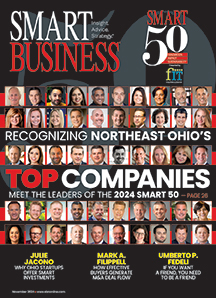Entrepreneurship is often described as a realizable pathway to achieving the American Dream. But the concept of the American Dream is not static — different eras yield different interpretations.
The American Dream was first articulated in 1931 when James Truslow Adams published “The Epic of America,” in which he described the concept as “that American dream of a better, richer, and happier life for all our citizens of every rank, which is the greatest contribution we have as yet made to the thought and welfare of the world.” The quest for a version of the dream was not just a 20th-century phenomenon, but also served as a beacon from the time the Puritans set off for new shores, through the Revolutionary War to the Civil War era, and into the 20th century.
In the post-war era of the late 1940s and ’50s, a media icon, The Saturday Evening Post, launched its interpretation of the American way/dream — an idealized version of the truth aimed at building a consensus among middle-class Americans about how they should live, dress, relax and consume. It was the Post editors who guided the subject matter, tone, tenor and ultimate message to be conveyed by stories and illustrations. The Saturday Evening Post developed a multipronged business model designed to achieve its organizational mission as arbiter of American culture. The primary goal was to make a profit, which it pursued through circulation but also through its relationship with advertising firms and corporations, and the strategic interplay of these two revenue streams.
The interest of advertisers in promoting their message through a particular channel depended upon the reach and character of the magazine. Its circulation tactics were designed to reach an audience best positioned geographically and economically to advance the products advertised within its pages. The Post strategy emphasized the advancement of consumerism as the essence of the American Dream.
Some historians have urged a revival of Adams’ original ideas on the American Dream focused on a higher goal pertaining to quality of life and spiritual enrichment. These historians suggested the American Dream has been altered from its original lofty vision of a full and meaningful life to a more limited view of the dream focused primarily on consumerism.
Today, a more expansive view of The American Dream is growing, including national prosperity, but coupled with entrepreneurship, meaningful life choices and fulfillment. The pandemic upended many notions of how we live and work. Recent survey results from GoDaddy show that 74 percent of U.S. small business owners say their perception of the American Dream has shifted. GoDaddy reports, “Small business owners today define their achievement of the American Dream as living a comfortable lifestyle (56 percent), feeling happy with their life (54 percent) and having the freedom to pursue their passions and interests (49 percent).”
Small business owners shared that being their own boss symbolizes to them achievement of the American Dream. Work-life balance, freedom and happiness are being prioritized as key ingredients of the modern-day American Dream. ●
Deborah D. Hoover is CEO of Entrepreneurship Education Consortium


